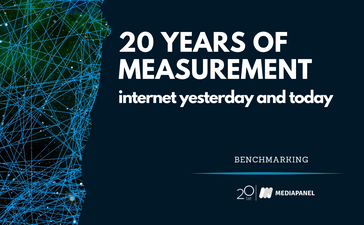
Dynamic Product Placement : The potential of using RPD data
One sector that benefits greatly from Big Data analysis is the TV market. Return Path Data (RPD), from devices such as cable, satellite and IPTV set-top boxes, as well as CDN and HbbTV technologies, is a valuable source of information about viewers (households) and their behavior. Nowadays, knowledge about consumers is a key factor for success in the TV market. Analysis of RPD data enables a deeper understanding of the audience, which allows for more effective program planning and more accurate content distribution decisions. RPD data allow monitoring of indicators such as average minute viewership, audience share or the time a viewer spends watching a given program. In addition, they allow analysis of viewer loyalty, research of trends and effectiveness of advertising activities.
Evolution of Business Models in Television.
One of the latest trends in the TV market is dynamic product placement. This strategy allows ads to be integrated into video content in a more natural and less intrusive way. Using artificial intelligence (AI), this advertising model plays a key role in the process of identifying optimal moments and places in video content where a product can be placed without disrupting the flow of the narrative. With dynamic product placement, the TV industry and the video market are becoming increasingly promising areas.
Pixels Dynamic Product Placement
According to a study by Amitgoel (2023), dynamic product placement is becoming increasingly popular and is seen as an important development in the television industry. Despite a certain degree of skepticism, the growing interest and potential benefits, such as naturalness and less intrusive advertising, point to its significant potential.
In Poland, this market is also gaining ground, especially with the increasing number of POCs (Products And Services) dedicated to dynamic placement. This opens up new prospects for advertisers, enabling them to reach their target audience in a subtle and effective way.
Better viewer experience
Dynamic product placement is not only an effective form of advertising, but also a way to improve the viewer experience. Ads are more integrated with content, making them better tolerated by viewers. As a result, this model can help increase viewer engagement and ad effectiveness.
As technology develops and the industry continues to experiment, dynamic product placement can be expected to play an increasingly important role in television advertising and the video market. This is a promising direction that could change the way ads are perceived and received by viewers. The use of RPD data to better bargain ads or products and the use of a multimedia adserver like AdOcean are important in this area.
The use of RPD in TV market analysis allows for a better understanding of viewers' needs and preferences. Dynamic ad insertion, dynamic product placement and other innovative business models are becoming increasingly popular, opening up new opportunities for TV broadcasters and improving the viewing experience for viewers. Continued advances in technology and data analytics are helping to further increase the importance of measurement data in the TV industry, allowing for more precise and effective marketing efforts and a better experience for users.


